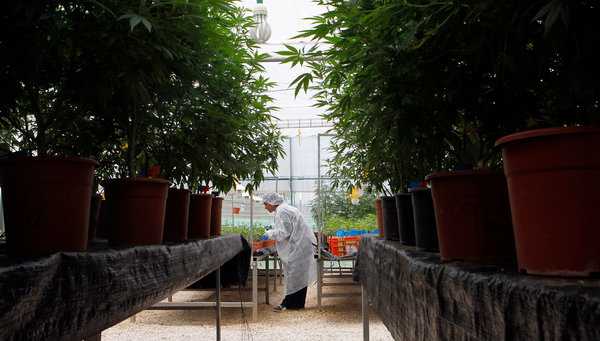Are advocates ready for the side effects of cannabis?
Perhaps the most promising development caused by increased leniency toward cannabis’ Schedule I status is the incipient field of legitimate cannabis study and research. Like most drugs, cannabis received less-than-tepid attention from the scientific realm as a result of its longstanding stigma and financial disinterest. Now that cannabis is leaping into the federal-cultural forefront, cannabis has found itself under intense study and scrutiny.
In years past, the majority of sanctioned cannabis studies in America fell under the umbrella of the NIDA, the informational mouthpiece for the federal government on drug abuse. Cannabis advocates (and scientists) tend to decry the NIDA as a propaganda machine for disseminating Anslinger-era misinformation about the dangers of cannabis, and since the government research institute has a federally mandated medical marijuana monopoly and chooses who they give their University of Mississippi grown swag to, those who back the NIDA’s anti-cannabis stance tend to be favored. To quote the Boston Globe:
“Then again, it’s not in NIDA’s job description-or even, perhaps, in NIDA’s interests-to grow a world-class marijuana crop. The institute’s director, Nora Volkow, has stressed that it’s ‘not NIDA’s mission to study the medicinal use of marijuana or to advocate for the establishment of facilities to support this research.’ Since NIDA’s stated mission ‘is to lead the Nation in bringing the power of science to bear on drug abuse and addiction, federally supported marijuana research will logically tilt toward the potential harms, not benefits, of cannabis.'”
In other words, the NIDA is not interested in any medicinal uses of the medicinal marijuana they provide, just its correlative dangers. The study of the deleterious effects of marijuana grown under the guise of medicine might border on classic American oxymoronism, but it does bring to light an oft-ignored reality of cannabis under the metaphorical microscope: Are cannabis users ready for the truth about cannabis?
I don’t doubt the medical benefits of cannabis. My uncle used it to allay his years of pain as he slowly succumbed to cancer. My ex-roommate used it to help soothe the frantic, amphetaminic genius of his mind. Now he works in a major research lab, has started his own organic systems research company and all of this while attending school in a growing and important field of research at a prestigious university. I’ve witnessed its remedial powers firsthand. However, this doesn’t distort my knowing that cannabis has its side effects.
And these side effects may not be pleasant. There’s a benign joke cannabis advocates use for the doubters. It generally ends with the clause: “side effects include Funyuns.” Medical marijuana will soon face intense scrutiny by independent and state/federal funded researchers as to what exactly the plant does to our body. Cannabis may link with serious illness in people with the right genetic predisposition. That’s a reality that many cannabis users don’t seem ready to face.
As cannabis spends more time in research labs and study groups, we’ll learn more about the plant in a year’s time than we learned in the past decade. The medical efficacy of the plant will increase exponentially. Most importantly, these studies will root out the side effects and then attempt to mitigate them.
Long-time cannabis advocates know it’s important to accept the good with the bad. Perhaps concentrated cannabinoids will cure cancer. I hope it does. But maybe cannabis does violate the psyche of those schizophrenically predisposed. It isn’t a panacea and, like any medicine, there will be side effects. Can advocates accept these side effects mean more than Funyuns?











